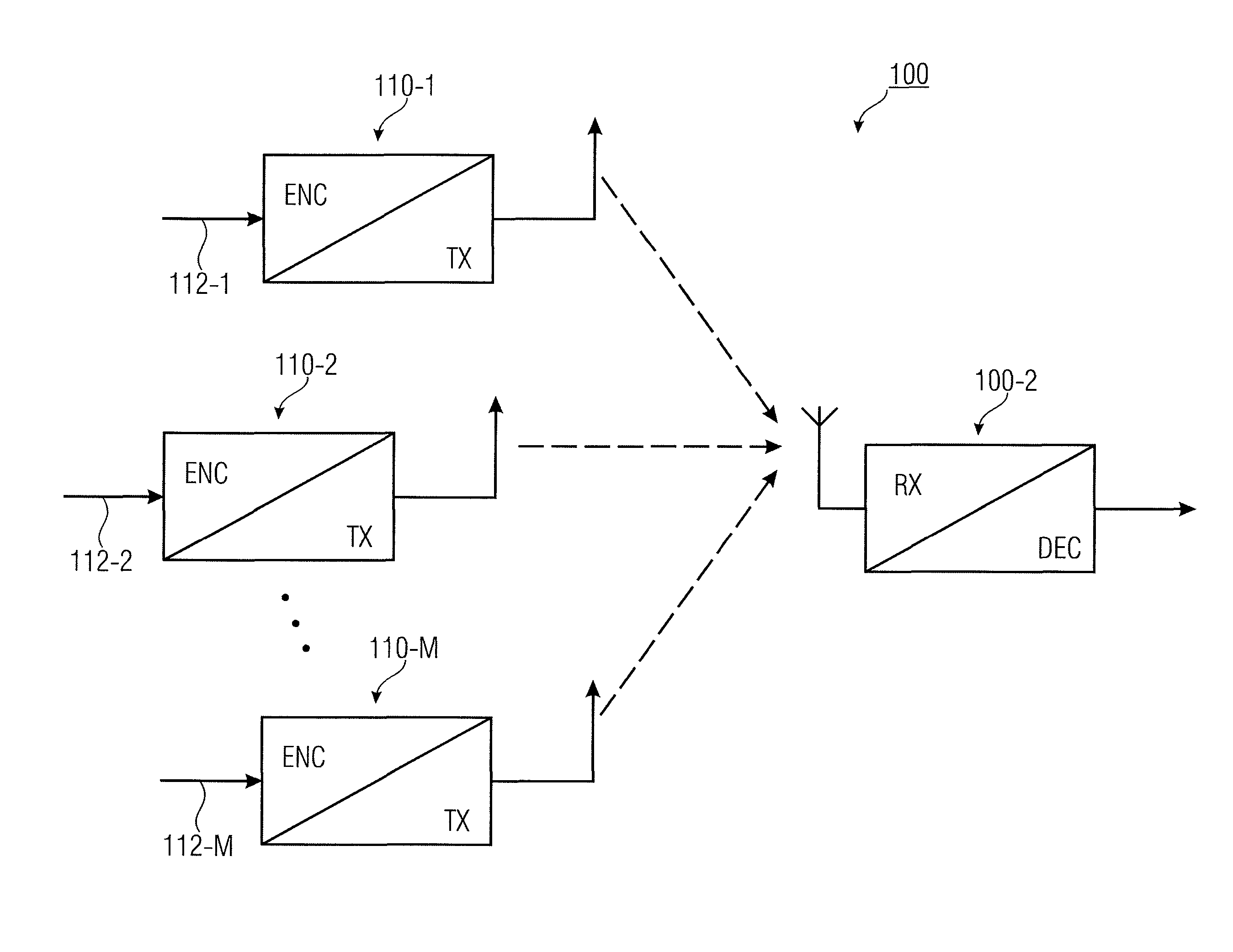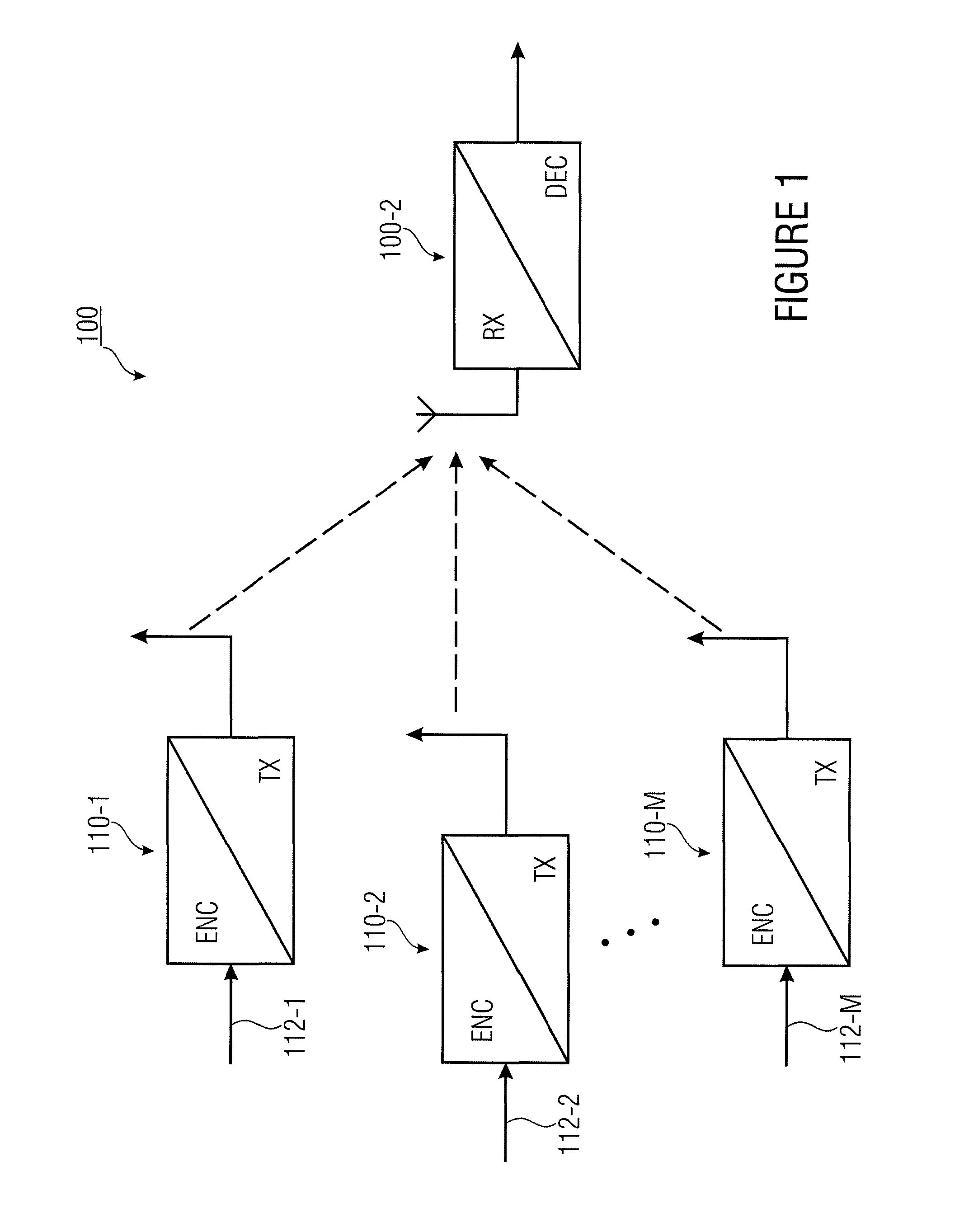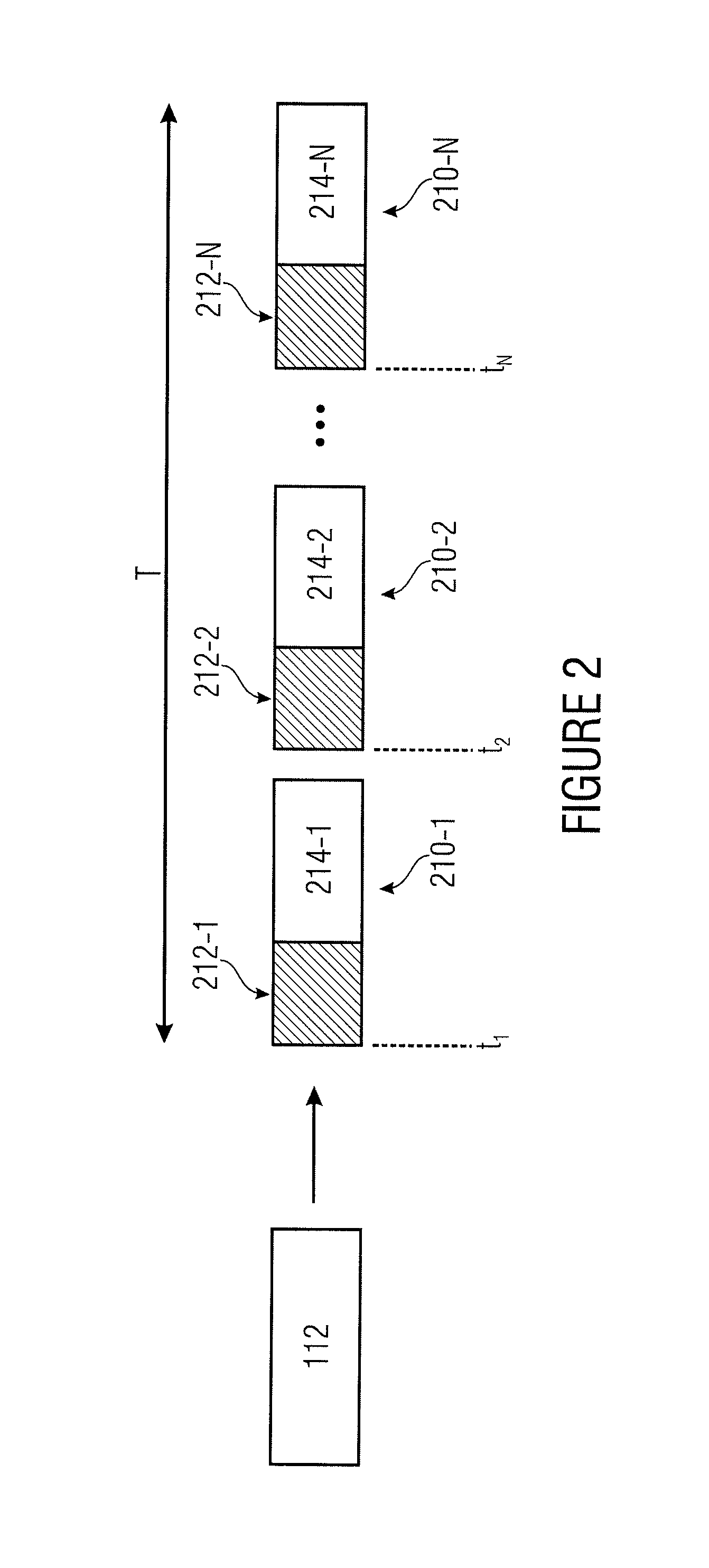Concept for combining coded data packets
a data packet and coding technology, applied in the field of payload data transmission concept, can solve the problems of inability to effectively utilize channel coding, interference or reception quality at the receiver, and often incoherent reception, so as to achieve effective utilization of incremental redundancy and/or code combining, increase code gain, and improve the effect of redundancy
- Summary
- Abstract
- Description
- Claims
- Application Information
AI Technical Summary
Benefits of technology
Problems solved by technology
Method used
Image
Examples
Embodiment Construction
[0042]FIG. 1 schematically shows a multi-subscriber communication system 100 wherein a plurality of transmitters 110-m (m=1, 2, . . . , M) unidirectionally transmit their payload data 112-m to a central receiver 120 in each case, i.e. there is no return channel from the receiver 120 to any of the transmitters 110-m (m=1, 2, . . . , M).
[0043]Each of the transmitters 110-m (m=1, 2, . . . , M) comprises a means ENC for generating a plurality of channel-coded data packets from the payload data 112-m (m=1, 2, . . . , M). This may be interpreted to mean that the payload data 112-m (m=1, 2, . . . , M), which is to be transmitted within a transmission time interval in each case, has the plurality of channel-coded data packets associated with it. In addition, each transmitter 110-m (m=1, 2, . . . , M) comprises a means (transmitting unit) TX for transmitting the plurality of channel-coded data packets to the receiver 120 within the time interval.
[0044]One of the transmitters 110-m (m=1, 2, ....
PUM
 Login to View More
Login to View More Abstract
Description
Claims
Application Information
 Login to View More
Login to View More - R&D
- Intellectual Property
- Life Sciences
- Materials
- Tech Scout
- Unparalleled Data Quality
- Higher Quality Content
- 60% Fewer Hallucinations
Browse by: Latest US Patents, China's latest patents, Technical Efficacy Thesaurus, Application Domain, Technology Topic, Popular Technical Reports.
© 2025 PatSnap. All rights reserved.Legal|Privacy policy|Modern Slavery Act Transparency Statement|Sitemap|About US| Contact US: help@patsnap.com



